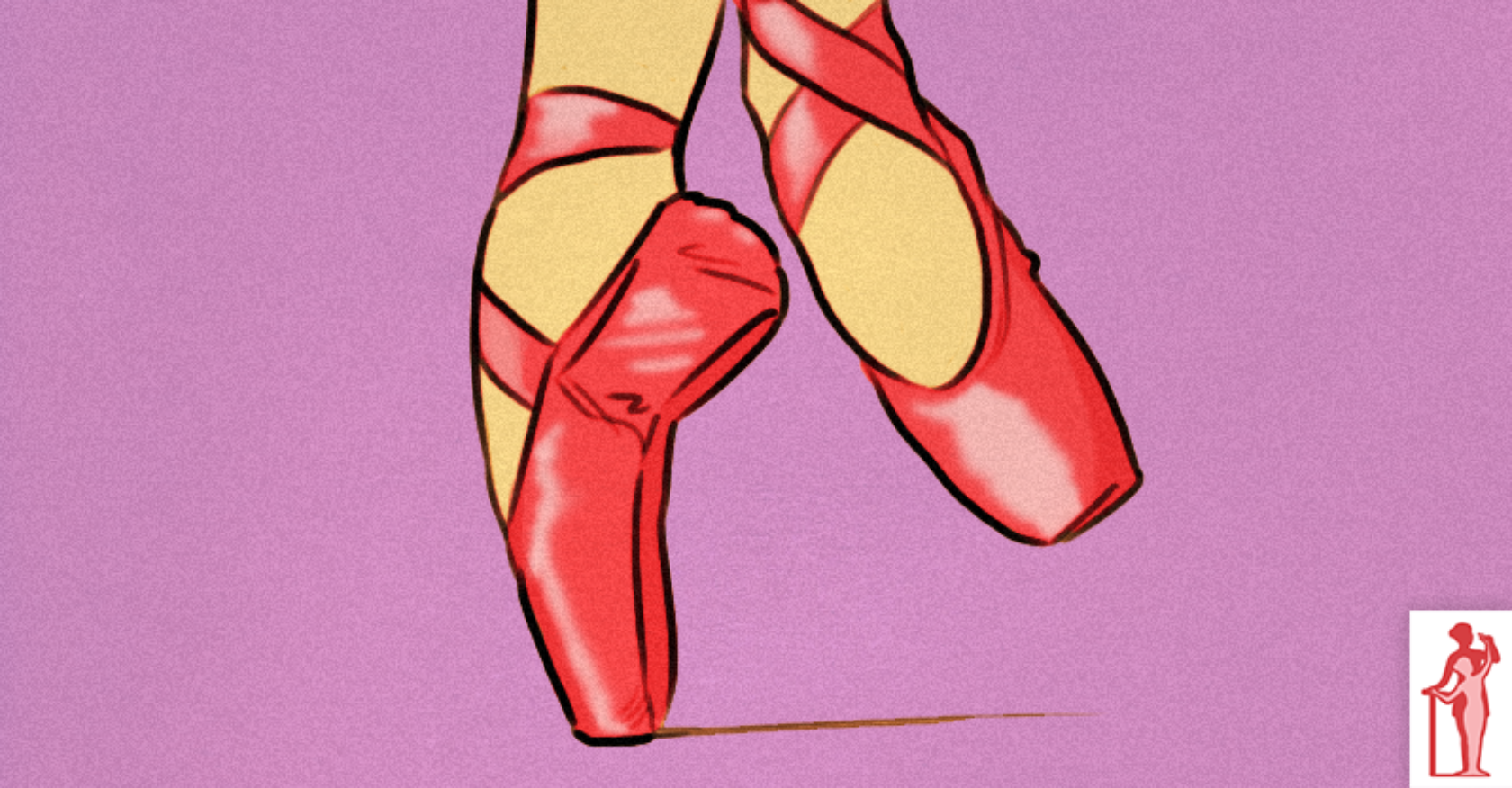
This is such a big and important question. It is one of hardest questions ballet teachers face. We don’t want to put them on pointe too early because they can really injure themselves.
So, when is the right time to start with them on pointe work?
In Ruth Brinkerhoff’s “
Pointe 1: An Introduction to Pointe Work“, she offers a fantastic overall guide that teachers can use to determine whether or not their students are ready. Here is an inside look at some of her guidelines!
General Requirements
She says there are 4 major general requirements to consider:
- Age: they should be no less than 12, older is better.
- Training: 3 or 4 years of ballet since age 8.
- Advancement: strength and technique to about a Ballet Grade 3 or 4 level (Cechetti or Royal Academy or ISTD grades)
- Frequency: should be currently taking ballet at least twice weekly.
Medical Advice
Students should also
make a visit to the doctor to make sure that . . .
- The student’s skeletal maturity is at the level that is usually expected at age 12 or older.
- There should be no pre-existing conditions or poor foot and ankle alignment, or other medical problems which might be made worse by pointe work.
- Alignment of bones in ankles and feet needs to be such that correct weight bearing on full pointe is possible to achieve.
Classroom Screening Tests
While the final decision is dependent upon the discretion of each individual teacher, the students enjoy having “tests” to see whether they will be given permission to wear pointe shoes. Of course, make your own observations privately, but here are some suggestions for how to “grade” them in such screenings.
The student is ready . . .
- When the student can hold the supporting thigh fully turned out in all barre work.
- When the student lands correctly from jumps with thighs well turned out, and feet in perfect alignment with knees, every time.
- When the student can do Pre-Pointe exercises on demi pointe correctly and well. Echappé relevé to 2nd in center is an excellent test to use. Strong legs and feet, no wobbly ankles, no straining of arms and shoulders.
- If the full pointe position is not fully possible at first, the potential to achieve it within a year with slow and careful exercising of the ankles and feet needs to be there.
There are many other considerations that a ballet teacher must take into account when making this very important decision with their students. In a later blog, we will discuss some of the practical steps we can take to fully prepare our students for dancing en pointe such as pointe shoe fitting, and how to teach those first few pointe lessons. See articles below for more information!
Related Articles:
Cited: “Pointe 1: An Introduction to Pointe Work for Teachers of Ballet”, by Ruth Brinkerhoff, copyright The Ballet Source, 2016.

Related
 This is such a big and important question. It is one of hardest questions ballet teachers face. We don’t want to put them on pointe too early because they can really injure themselves. So, when is the right time to start with them on pointe work?
In Ruth Brinkerhoff’s “Pointe 1: An Introduction to Pointe Work“, she offers a fantastic overall guide that teachers can use to determine whether or not their students are ready. Here is an inside look at some of her guidelines!
This is such a big and important question. It is one of hardest questions ballet teachers face. We don’t want to put them on pointe too early because they can really injure themselves. So, when is the right time to start with them on pointe work?
In Ruth Brinkerhoff’s “Pointe 1: An Introduction to Pointe Work“, she offers a fantastic overall guide that teachers can use to determine whether or not their students are ready. Here is an inside look at some of her guidelines!


Comments
No comments for this post.
Add Comment